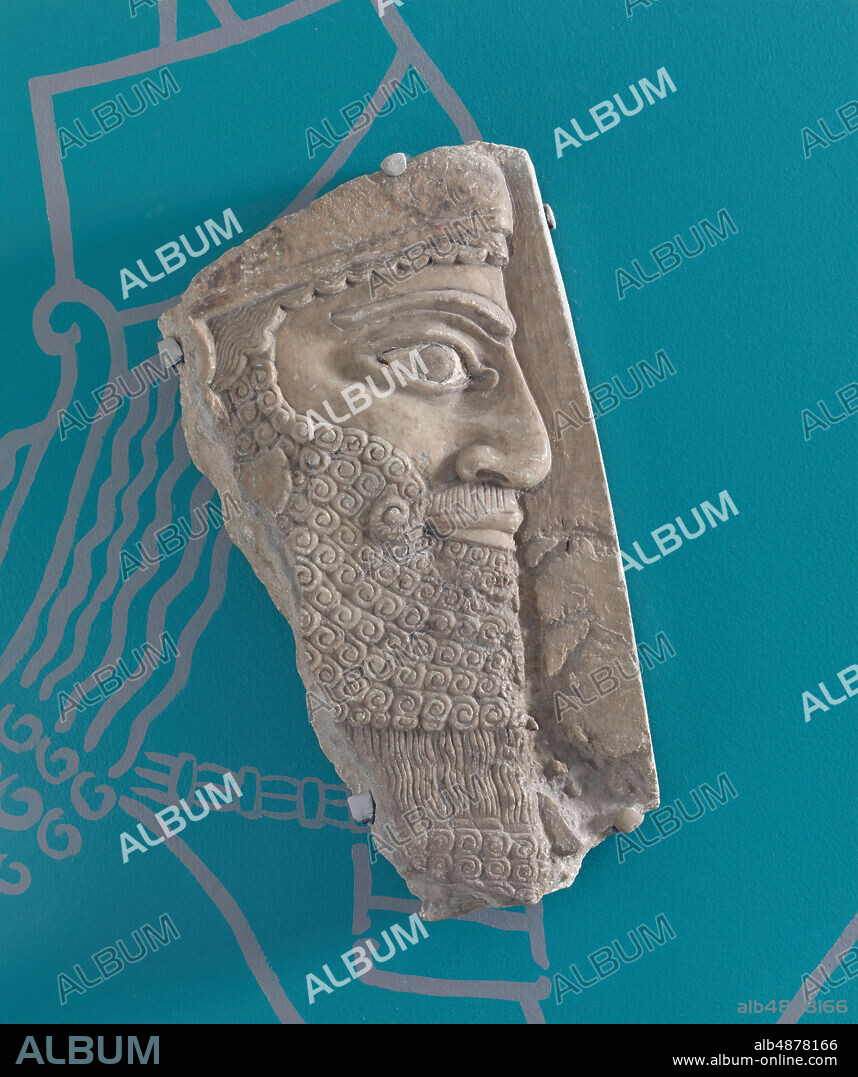alb4878166
Unknown Artist, Assyrian Relief: Head of Ashurnasirpal II from Kalhu (Nimrud), Iraq, Northwest Palace, Room B, panel 14, ca. 875 - 860 B.C.E., gypsum (Mosul alabaster), 13 9/16 in. x 7 1/16 in. (34.5 cm. x 18 cm.), This portrait of the Assyrian king came from a large relief, the majority of which still resides in Iraq. This portrait once adorned the throne room of the palace. The remarkable state of preservation suggests that the sculpture lay unexposed from the sac of the site, in ca. 614 B.C.E., until its excavation in the nineteenth century. Paint is still visible around the eye, the beard, and decorating the tiara portion of the crown. The large profile eye, prominent nose, and stylized rendition of the beard are all features of the imperial style preferred by the Assyrians. A similar visage was applied to divine figures, thus blurring the lines between regal and divine.

|
Añadir a otro lightbox |
|
Añadir a otro lightbox |



¿Ya tienes cuenta? Iniciar sesión
¿No tienes cuenta? Regístrate
Compra esta imagen

Descripción:
Ver traducción automática
Unknown Artist, Assyrian Relief: Head of Ashurnasirpal II from Kalhu (Nimrud), Iraq, Northwest Palace, Room B, panel 14, ca. 875 - 860 B.C.E., gypsum (Mosul alabaster), 13 9/16 in. x 7 1/16 in. (34.5 cm. x 18 cm.), This portrait of the Assyrian king came from a large relief, the majority of which still resides in Iraq. This portrait once adorned the throne room of the palace. The remarkable state of preservation suggests that the sculpture lay unexposed from the sac of the site, in ca. 614 B.C.E., until its excavation in the nineteenth century. Paint is still visible around the eye, the beard, and decorating the tiara portion of the crown. The large profile eye, prominent nose, and stylized rendition of the beard are all features of the imperial style preferred by the Assyrians. A similar visage was applied to divine figures, thus blurring the lines between regal and divine
Personas:
Crédito:
Album / quintlox
Autorizaciones:
Modelo: No - Propiedad: No
¿Preguntas relacionadas con los derechos?
¿Preguntas relacionadas con los derechos?
Tamaño imagen:
5390 x 6432 px | 99.2 MB
Tamaño impresión:
45.6 x 54.5 cm | 18.0 x 21.4 in (300 dpi)
Palabras clave:
ADORNADA • ADORNADO • ASSURNASIRPAL II • ASURNASIRPAL II • BARBA • BASES • CABEZA • DECORAR • IRAK • NIMRUD • OJO • OJOS • PRESERVACIÓN • RELIEVE ASIRIO • RETRATO • SACO • SÍTIO • UNKNOWN ARTIST • YESO
 Pinterest
Pinterest Twitter
Twitter Facebook
Facebook Copiar enlace
Copiar enlace Email
Email
